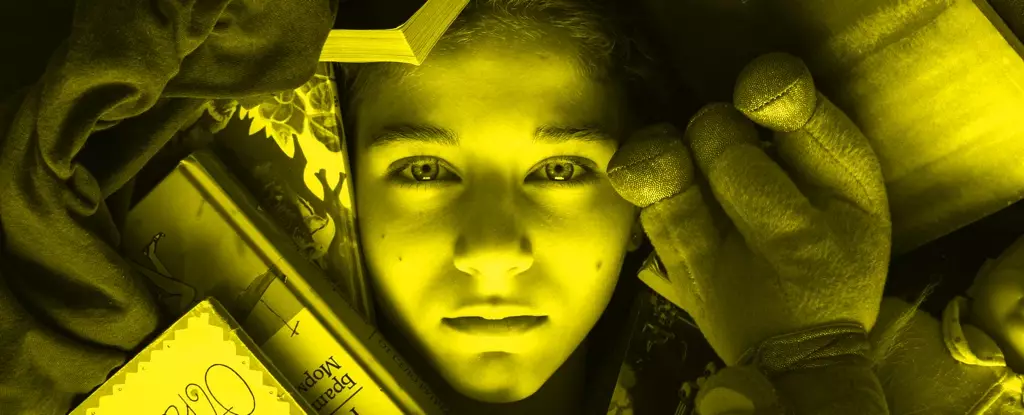Recently, I embarked on a reflective journey with my mother as we sifted through boxes left behind by my grandparents after their passing. One box amusingly labeled “toothpick holders and other treasures” contained a myriad of keepsakes from days long gone. While the quest for actual toothpick holders was fruitless, my discovery of a solitary jigsaw puzzle piece struck a nostalgic chord. This seemingly trivial artifact was emblematic of my late grandmother’s quirky habit—she would often hide the last piece of a puzzle, only to reveal it dramatically later. As we spent hours reminiscing and sorting through memories, we found ourselves discarding about 90% of the contents. This experience led me to ponder a recurring question I encounter in both my personal life and professional practice: “Why did I keep this?”
I am a licensed clinical psychologist who specializes in hoarding disorder, particularly among older adults. Hoarding disorder is characterized by an overwhelming urge to collect items along with an inability to discard possessions, leading to cluttered living environments that can hinder daily functioning. While individuals may not always meet the clinical threshold for hoarding disorder, many struggle with clutter in varying degrees. For many, the emotional bonds to objects—be it their sentimental value or the belief that they might one day become useful—are significant. As people age, these tendencies can intensify, often due to cognitive changes that affect decision-making capabilities.
Research indicates that executive function, which governs our decision-making processes, tends to decline with age. This can lead to increased struggles in determining what to keep and what to let go. The conventional view of hoarding suggests that distress during decisions drives the need to hold onto everything. However, one of my studies revealed a different narrative. When observing older adults sorting through their possessions, we noted that many exhibited lower levels of stress during the process. In fact, many reported feelings of positivity while engaging in decisions about their belongings.
Values at Play: Understanding Motivations Behind Clutter
Further intriguing findings emerged during my research. Participants with hoarding tendencies often showed an altruistic disposition, feeling a moral obligation towards their items. Common phrases like “I need this to have a good home” or “this was a gift from my grandmother” reveal that the motives for saving can be tied to personal values rather than mere fear of loss. This altruistic perspective suggests a complexity in the emotional landscape of hoarding that goes beyond traditional understandings.
Thus, it became apparent that a values-based approach to decluttering could be transformative. My team recently conducted a study demonstrating that when older adults identified their core values, it became easier for them to make decluttering decisions that aligned with their long-term goals. Instead of merely focusing on whether an object “sparks joy,” individuals could reflect on deeper significances tied to their values, which shape their objectives and experiences.
Our research culminated in practical strategies that individuals, regardless of age, can adopt to mitigate clutter without unnecessary distress. A crucial first step involves articulating one’s personal values. This process can clarify which items truly align with what is important in one’s life. For instance, someone who cherishes health may prioritize keeping a cookbook filled with nutritious recipes over a decorative cookbook lacking practical use.
Furthermore, setting clear objectives for spaces in the home can help maintain focus. Whether it’s creating a functional workspace or prepping a kitchen for family gatherings, connecting the act of decluttering to broader life goals can sustain motivation through the process.
As one navigates the emotional terrain of decluttering, it is crucial to remain mindful that values are inherently subjective. Helping a loved one sort through their possessions requires a non-judgmental, curious attitude. What may seem like clutter to one could be considered vital memories or potential treasures to another. Thus, fostering discussions around items—rather than imposing decisions—can pave the way for healthier decluttering experiences.
Ultimately, engaging with possessions through the lens of values can help reshape our understanding of clutter. Recognizing what holds true importance can foster not just tidiness but also a deeper connection to one’s own life narratives and aspirations. For those grappling with more profound challenges, resources are available through platforms like the International OCD Foundation, where support and guidance on hoarding disorder can be found.
Navigating the complexities of hoarding and clutter is an emotional and psychological journey, one that shifts focus from fear and loss to values and priorities. Through reflection, discussion, and understanding, we can create spaces that resonate with meaning and purpose, ultimately enhancing our quality of life.


Leave a Reply